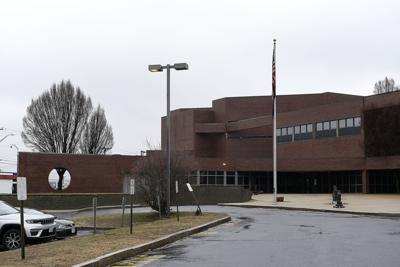A few weeks ago, I opened my high-school U.S. history classes with an innocuous sounding but freighted question about World War Two.
Noting that 2025 marks the 80th anniversary of the end of that conflict, I asked: “What lessons does that war offer us, today?” My tenth graders surprised me. It was our first day studying WW2. They were drawing solely on past knowledge, but there was nothing sophomoric about their thoughtful responses.

On the whiteboard in my classroom, I distilled their comments into three “lessons from WW2:” 1) Don’t appease aggressive regimes. 2) Beware of politicians telling big lies. 3) Beware of politicians who blame all the nation’s problems on religious or ethnic minorities.
Then, I hesitated. My opening question was loaded because it implied that history can be mined for didactic lessons applicable to the present moment. This approach is what scholars sometimes refer to as a “usable past.
” For historians and teachers, it’s a knife-edged idea. We want history to be relevant, to have applicability, but we also want to understand the past on its own terms. To know the past without warping it.
Probably no historical event surpasses World War Two for usable-past appeal, and distortion. Historians have warned about the risks of tapping the past this way. Writing on the seventieth anniversary of the war’s end, in the preface to his magisterial The German War (2015), Oxford’s Nicholas Stargardt described the book’s genesis a decade earlier, in 2005.
“I realized that the contemporary need to draw the right didactic lessons from [the war] had led scholars as well as the media to neglect one of the essential tasks of historical enquiry—first and above all, to understand the past.” Stargardt’s work showed, notably, that ordinary Germans under Hitler knew and talked much more about the Holocaust than 21st-century retelling has shown. That sort of public discussion wasn’t supposed to have happened in the totalitarian Third Reich.
The fact that it did undercuts both an ongoing extreme-right narrative that minimizes the Holocaust , and a counter narrative depicting Germans as willfully ignoring genocide. Stargardt’s book was, in part, an effort to claw back what actually happened from a distorted “usable past.” Prioritizing what actually happened has to be the goal of teaching and writing history.
Yet, looking at the “lessons” on my classroom whiteboard, I couldn’t help being struck by their current applicability. We come at the past from our own moment in history. Our present shapes both what we see when we look backward and the questions we ask about images in the rear-view mirror.
In this sense, as William Faulkner famously remarked, “The past is never dead. It’s not even past.” The world in 2025 looks quite different than it did at Stargardt’s two vantage points, the 60th and 70th anniversaries of WW2’s end.
Since then, nationalism and isolationism have trumped international cooperation. In 2016, British voters opted out of the European Union and Americans elected a president who campaigned by promising to put “America first,” an unfortunate reference to the U.S.
isolationist movement before WW2 The most recent report from Freedom House , an agency that rates the quality of democracy globally, notes that 2023 marked the 18th consecutive year of worldwide democratic decline . The war in Ukraine , the deadliest European conflict since WW2, grinds into its fourth year, and the American president has cast doubt on his commitment to that nation as well as the NATO alliance Americans established after WW2 to obviate the threat of aggressive war in Europe. That same president has racked up an unprecedented record of lies.
According to one fact checker, in his first term alone he had over 30,000 false or misleading claims. Leading scholars, including historians of fascism, keep making alarming comparisons between WW2 and the present. These include Yale’s Timothy Snyder, whose slim book, “ On Tyranny: Twenty Lessons from the Twentieth Century ” (2017) was a New York Times bestseller, and New York University’s Ruth Ben-Ghiat, whose Strongmen, Mussolini to the Present (2021) describes authoritarians from Il Duce to The Donald.
Works like these show that a usable past can be indispensable for understanding current events and anticipating the near future. Thoughts along these lines flashed through my mind while I stood in my classroom deciding how to respond to my students’ “lessons from WW2.” After a long silence, I asked “How would you apply these lessons right now?” Chris Doyle lives in Simsbury and teaches in Connecticut.
He has a doctorate in history..
Politics

Opinion: Helping CT students understand WW II and the usable past

I stood in my Connecticutco classroom deciding how to respond to my students’ “lessons from WW2.” After a long silence, I asked “How would you apply these lessons right now?”















